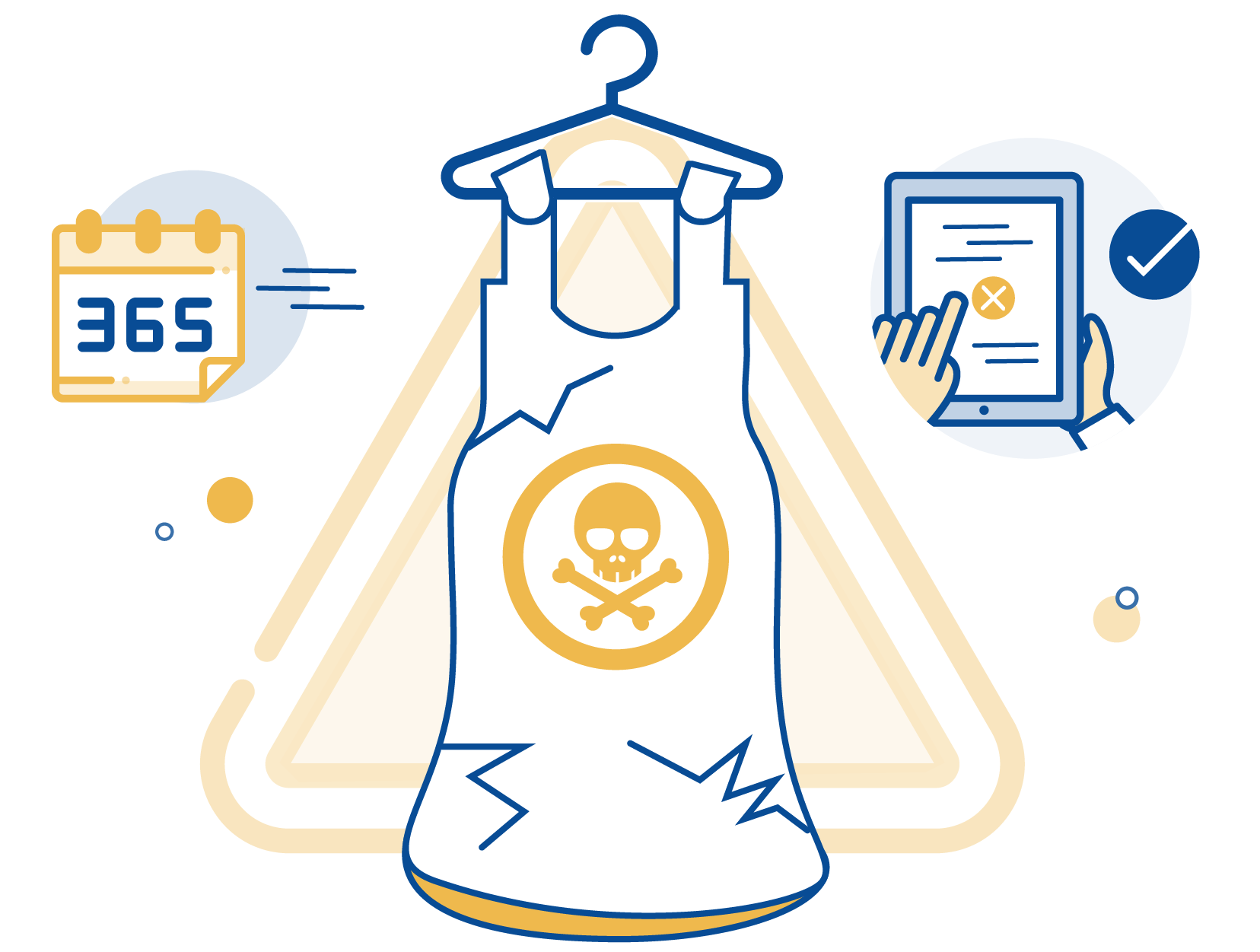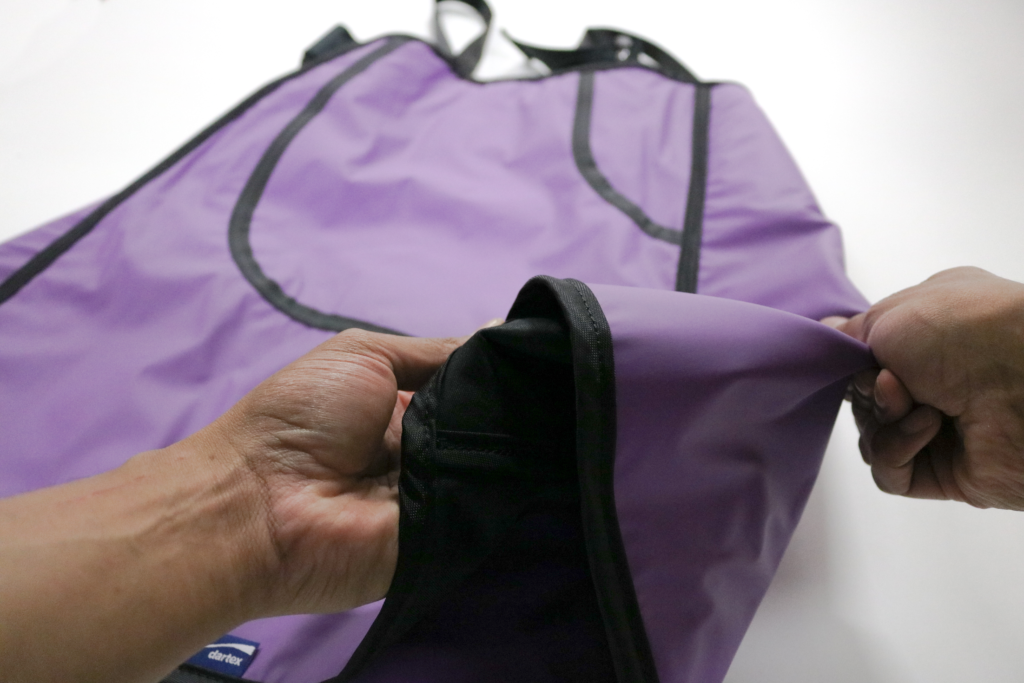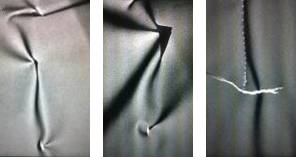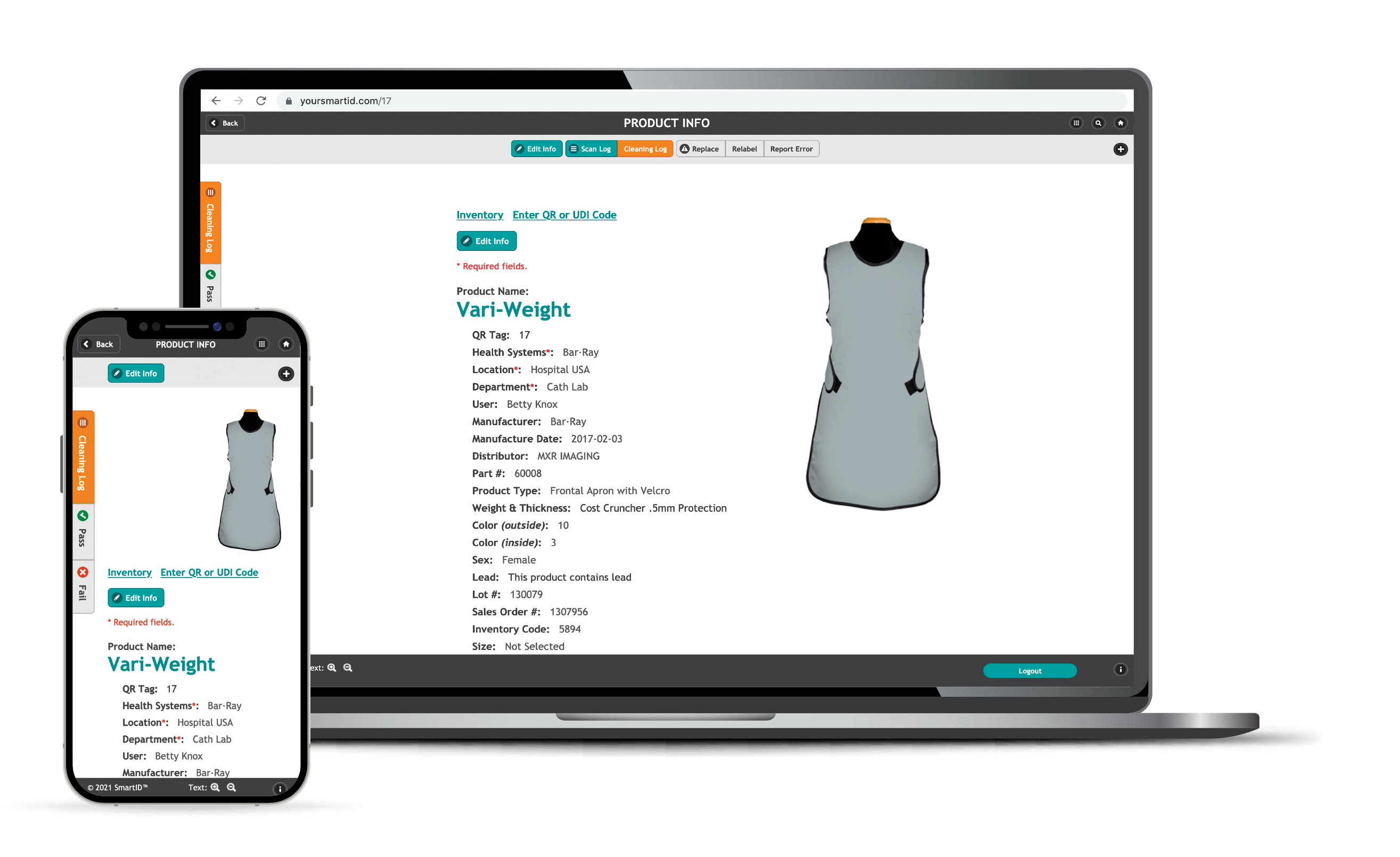How to Inspect Your Lead Apron



Did you know your lead apron can crack? That’s right, underneath the layer of fabric, the sheets of lead or composite material can crack and split leaving you vulnerable to radiation. Cracking usually happens if aprons aren’t stored correctly, but cracks can occur over time to the most immaculately cared for apron. The Joint Commission recommends that aprons be inspected annually (Schumacher, 2014), but how do you actually inspect a lead apron?
Inspections should be carried out when you first receive a new apron and yearly after that. In addition, all inspections should be logged in an inspection tracking system such as SMART ID so that all assets have logged inspections on file.

Visual
A visual inspection of your aprons should uncover any outward damage or need for repair.
Tactile
By feeling the apron you can also tell if there are any abnormalities in the protective material.
X-ray or Fluoroscopy
A radiograph of your aprons can show what’s going on in that lead. Cracks and tears show up easily and creased sections show the weak points in the lead.
Inspections should be carried out when you first receive a new apron and yearly after that.

1. Photo credits: Dr. Kern, Cath Lab Digest
The photo shows the appearance of cracks and tears in aprons that have radiographs taken.
So, you’ve inspected your apron and found cracks. What do you do now? A paper by Doctors W. Pillay and W. Stam covers a framework for apron rejection criteria. (Pillay, 2008) If there is any tearing or thinning lead, especially damage in the area of vital organs or gonads the lead should be discarded. Additional issues are things like broken closures. Broken Velcro, buckles, and magnets should be repaired, or the apron discarded if it causes your apron to not function as designed.
THE LAST STEP IS TO LOG YOUR INSPECTIONS WITH AN INSPECTION TRACKING SOFTWARE.
Software like SMART ID is designed for aprons tracking, your accrediting body will be looking for records of tracked aprons so software like this is good to have.

If you keep good practices like this in mind, it will be easy to keep yourself safe from radiation exposure. As a professional in the business of saving lives, protecting yourself is paramount.
Schumacher, P., M.S. (Ed.). (2014, November 5). Accreditation and Certifications. Joint Commission online.
Pillay, M. Stam W. (No. 2). (2008, August). Inspection of Lead Aprons: A Practical Rejection Model; Health Physics, volume 95.

